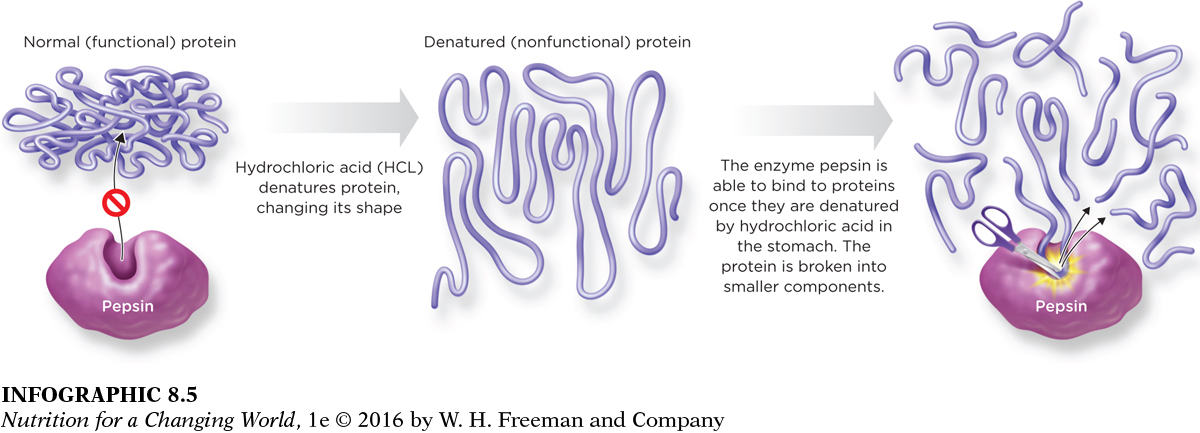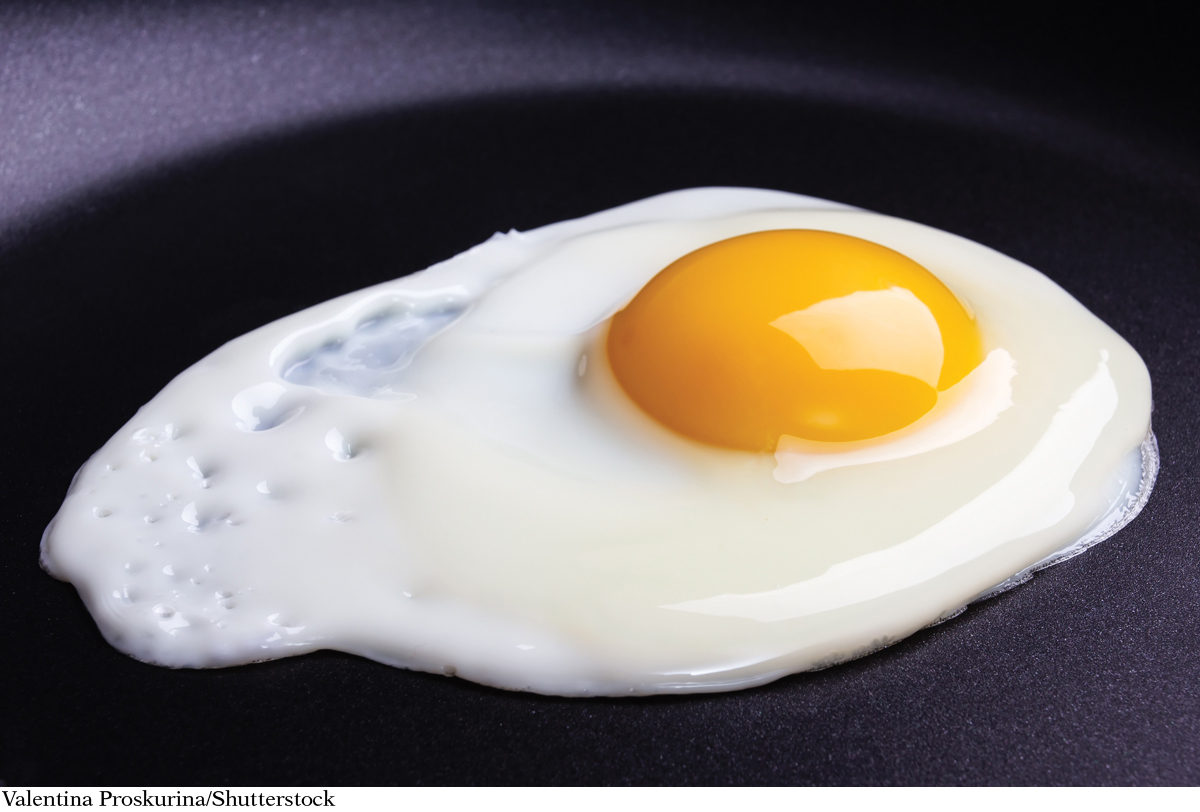DIGESTION AND ABSORPTION OF PROTEINS
DENATURATION disruption of the three-
The original shape of the protein is not necessarily permanent. Heat, light, change in pH, alcohol, or motion—
It’s easy to visualize protein denaturation in the kitchen—
In our bodies, denaturation by stomach acid (hydrochloric acid) unfolds a food protein in the stomach. Unfolding allows the enzyme pepsin, produced by cells lining the stomach, to access the peptide bonds and increase the digestibility of the protein. (INFOGRAPHIC 8.5)

Question 8.5
 Atrophic gastritis is a condition that results in insufficient hydrochloric acid production by the stomach. Describe why this condition would decrease the efficiency of protein digestion.
Atrophic gastritis is a condition that results in insufficient hydrochloric acid production by the stomach. Describe why this condition would decrease the efficiency of protein digestion.
Hydrochloric acid denatures proteins, changing the shape so that the enzyme pepsin can access the peptide bonds and break the protein into fragments. Without hydrochloric acid, pepsin would not be able to begin the dismantling of protein.

Once the protein fragments enter the small intestine, enzymes released from the pancreas, known as proteases, break the strings of amino acids into peptides, short chains of amino acids. These peptides are digested further by enzymes on the surface of the intestinal mucosa, and dipeptides, tripeptides, and individual amino acids are then absorbed by mucosal cells of the small intestine with the assistance of various transport proteins. From the mucosal cells the amino acids are transported into the blood by additional transport proteins. (INFOGRAPHIC 8.6)

Question 8.6
 What is the largest protein fragment that can be absorbed into the mucosal cells lining the small intestine?
What is the largest protein fragment that can be absorbed into the mucosal cells lining the small intestine?
The largest protein fragments to be absorbed into the mucosal cells are tripeptides.